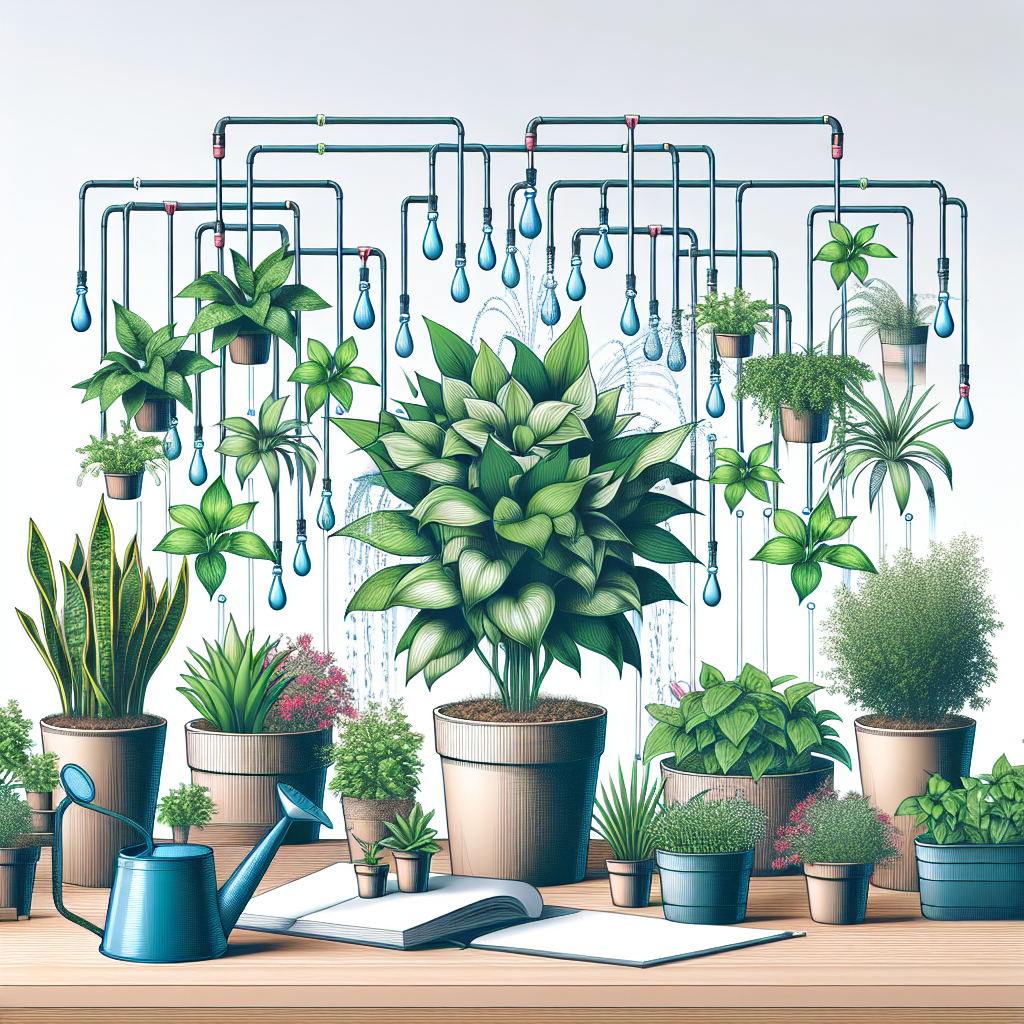Creating an Effective Slow Drip Irrigation System for Pot Plants
Introduction
Pot plants require consistent watering to thrive and grow healthy. However, manually watering pot plants can be time-consuming and ineffective, as it can lead to over-watering or under-watering the plants. To address this issue, many gardeners are turning to slow drip irrigation systems as a more efficient and effective way to water their pot plants. In this article, we will discuss how you can create an effective slow drip irrigation system for your pot plants.
Benefits of Slow Drip Irrigation
Slow drip irrigation is a method of watering plants slowly and evenly over a period of time, allowing the water to seep into the soil gradually. This method has several benefits for pot plants:
1. Prevents over-watering: With slow drip irrigation, water is delivered directly to the plant’s roots, preventing excess water from pooling on the surface of the soil and causing root rot.
2. Conserves water: Slow drip irrigation uses water more efficiently than traditional watering methods, reducing waste and helping to conserve this valuable resource.
3. Promotes healthy roots: By delivering water directly to the roots of the plant, slow drip irrigation encourages deep root growth and helps plants establish a strong foundation.
4. Saves time: Once set up, a slow drip irrigation system requires minimal maintenance and can save you time compared to manual watering.
How to Create a Slow Drip Irrigation System for Pot Plants
Creating a slow drip irrigation system for your pot plants is relatively easy and can be done with just a few simple materials. Here’s how you can do it:
1. Choose the right pots: Before setting up your slow drip irrigation system, make sure you are using pots with good drainage holes at the bottom. This will allow excess water to drain out easily and prevent water-logging.
2. Gather your materials: You will need a few basic materials to create your slow drip irrigation system, including:
– A plastic bottle or container with a lid
– A drill or sharp object for making small holes
– Tubing or hose
– Watering spikes or stakes
– Scissors
3. Prepare the bottle: Start by drilling small holes in the lid of the plastic bottle or container. These holes will allow water to slowly seep out when the bottle is filled with water.
4. Connect tubing: Attach one end of the tubing or hose to the lid of the bottle that has holes drilled in it. The other end of the tubing should be placed in each pot plant that you want to irrigate.
5. Insert stakes: Place watering spikes or stakes in each pot plant next to where you have inserted the tubing. This will help deliver water directly to the roots of the plants.
6. Fill with water: Fill the plastic bottle with water and screw on the lid tightly. Place it at an elevated position above your pot plants so that gravity can help distribute the water through the tubing.
7. Adjust flow rate: You may need to experiment with different sized holes in the lid of your bottle or adjust how much you fill it with water until you find a flow rate that works best for your specific pot plants.
Maintenance Tips for Your Slow Drip Irrigation System
To ensure that your slow drip irrigation system remains effective and continues to benefit your pot plants, here are some maintenance tips you should follow:
– Check regularly: Inspect your slow drip irrigation system regularly to ensure that everything is working properly and there are no leaks or clogs.
– Clean tubing: Clean out any debris or mineral build-up in your tubing periodically by flushing it with clean water.
– Adjust as needed: Depending on factors such as temperature and plant growth, you may need to adjust how often you fill your plastic bottle with water or how many holes are drilled in it.
– Monitor plant health: Keep an eye on your pot plants’ health and growth patterns after implementing a slow drip irrigation system. Make adjustments as needed if you notice any issues such as under-watering or over-watering.
Conclusion
Creating an effective slow drip irrigation system for your pot plants is a simple yet impactful way to ensure they receive consistent moisture without wasting excess water or risking root damage from over-watering. By following these steps and maintenance tips outlined in this article, you can help promote healthy growth in your pot plants while saving time and resources in caring for them.
Overall Word Count : 754














